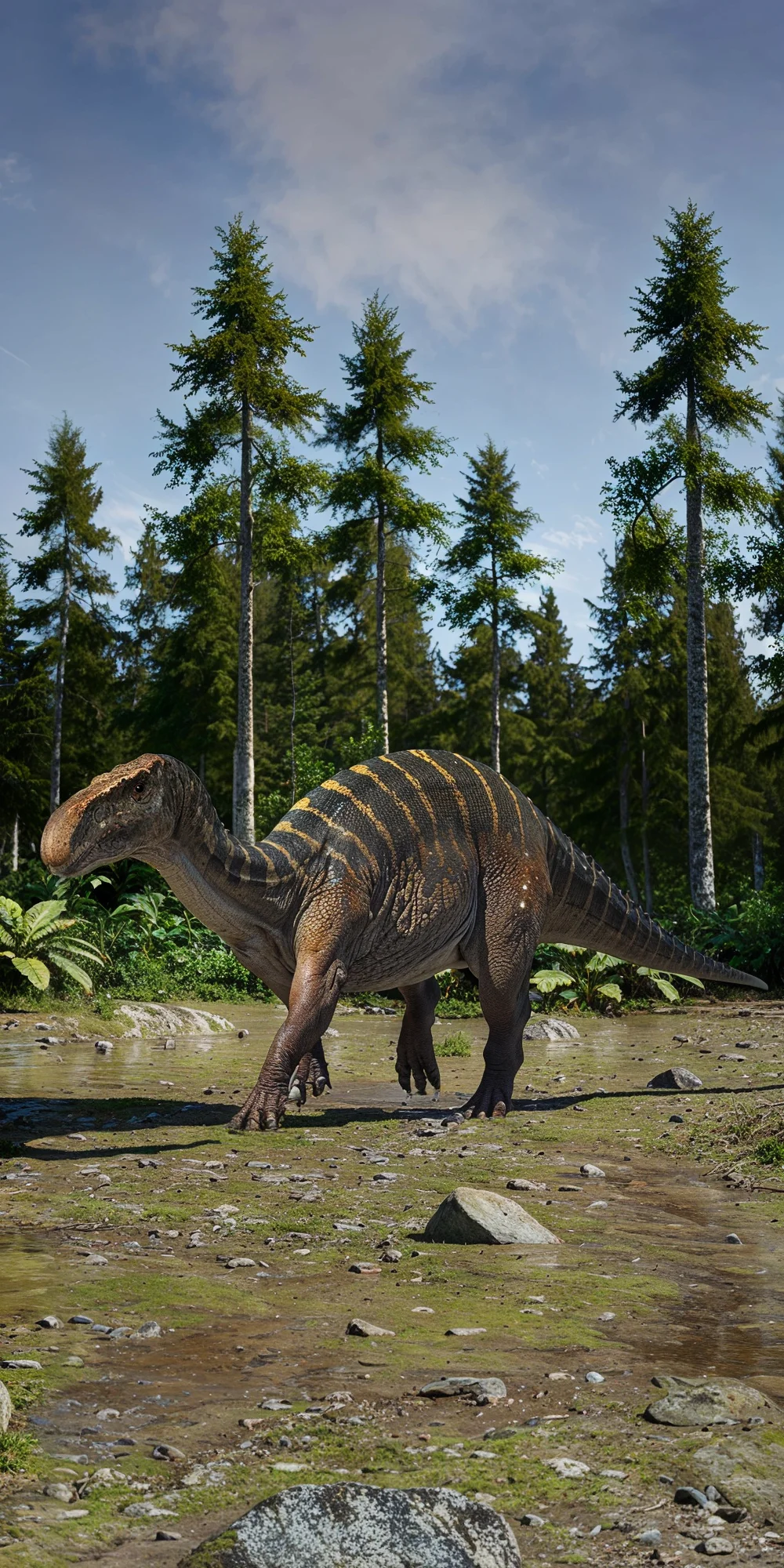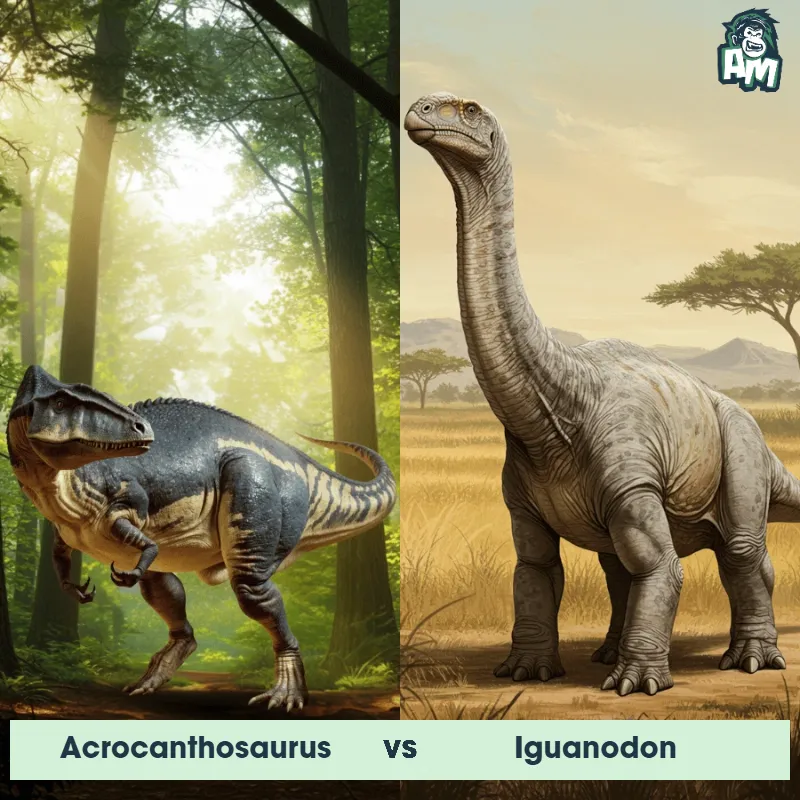The Iguanodon
The Iguanodon, an herbivorous dinosaur that lived during the Early Cretaceous period, was characterized by its large size and unique thumb spikes. With a bulky body covered in scales, a long tail for balance, and a beak-like mouth ideal for munching on plants, the Iguanodon was a formidable herbivore.

| Iguanodon | |
|---|---|
| Size | Up to 30 feet (9.1 meters) |
| Weight | Several tons |
| Speed | 26 mph (42 km/h) |
| Key Strength | Sharp thumb spikes |
| Biggest Weakness | Vulnerable belly |
| Scientific Name | Iguanodon |
| Family | Iguanodontidae |
| Habitat | Woodlands and forests |
| Geography | Europe, North America, Asia |
| Diet | Herbivorous |
| Lifespan | 20 years - 30 years |

The Iguanodon
The Iguanodon, an herbivorous dinosaur that lived during the Early Cretaceous period, was characterized by its large size and unique thumb spikes. With a bulky body covered in scales, a long tail for balance, and a beak-like mouth ideal for munching on plants, the Iguanodon was a formidable herbivore.
Fun Fact: Iguanodons were one of the first dinosaur species ever discovered and named in 1825 by Gideon Mantell, a British doctor and paleontologist.
| Iguanodon | |
|---|---|
| Size | Up to 30 feet (9.1 meters) |
| Weight | Several tons |
| Speed | 26 mph (42 km/h) |
| Key Strength | Sharp thumb spikes |
| Biggest Weakness | Vulnerable belly |
| Scientific Name | Iguanodon |
| Family | Iguanodontidae |
| Habitat | Woodlands and forests |
| Geography | Europe, North America, Asia |
| Diet | Herbivorous |
| Lifespan | 20 years - 30 years |
Iguanodon Matchups
We use AI to simulate matchups between the Iguanodon and other animals. Our simulation considers size, strength, and natural predatory behaviors to determine the most likely outcome.

Can't find the Matchup you want?
Create Your Own MatchupIguanodon: Diet, Predators, Aggression, and Defensive Behaviors
What did Iguanodons eat?
Iguanodons were herbivorous dinosaurs that primarily fed on plants. They had a diet consisting of leaves, fruits, and other vegetation available in their habitat. Their teeth were adapted for grinding plant material, indicating their specialization as herbivores.
Did Iguanodons have any predators?
Iguanodons were large dinosaurs, and as adults, they did not have many natural predators. However, young or smaller Iguanodons may have been susceptible to predation by larger carnivorous dinosaurs like the Allosaurus. These predators would target vulnerable individuals that were easier to overpower.
Were Iguanodons aggressive?
Iguanodons were not generally considered aggressive dinosaurs. They were known to be social animals that lived in herds, and their behavior towards each other was likely peaceful. However, like most animals, they may have exhibited territorial behavior or aggression towards rivals during mating season.
Did Iguanodons fight?
Iguanodons have been speculated to engage in intra-specific combat during mating season or when defending their territory. Some paleontologists believe that they may have used their thumb spikes to settle disputes or establish dominance within the herd. However, there is limited concrete evidence of Iguanodons engaging in physical fights.
How did Iguanodons defend themselves?
Iguanodons had various adaptations to defend themselves against predators or threats. One of their most distinctive features was their thumb spikes, which could have been used for self-defense or as a means of warding off attackers. Their size and strength also likely served as a deterrent to potential predators.
What was the biggest weakness of Iguanodons in a fight?
Despite their size and potential defensive capabilities, Iguanodons had certain weaknesses in combat situations. Their lack of speed and agility compared to some predators could make them vulnerable to ambush attacks by swift carnivorous dinosaurs. Additionally, their herbivorous diet may have limited their physical prowess in confrontations with more specialized carnivores.
Fun Fact: The name "Iguanodon" means "Iguana tooth" due to its teeth resembling those of the modern iguana, though they were actually herbivorous rather than carnivorous.
Fun Fact: Iguanodons are believed to have lived in herds, which may have provided protection from predators and facilitated social behavior within the group.











